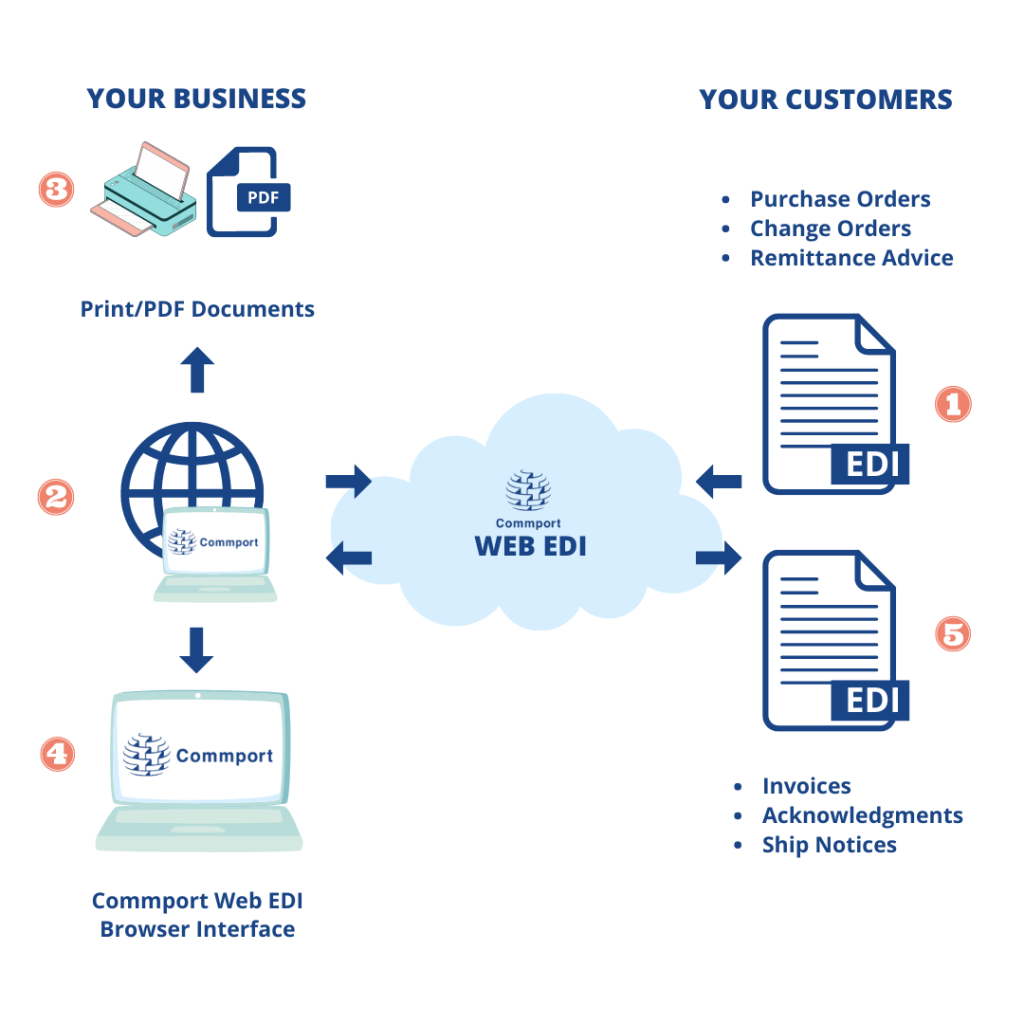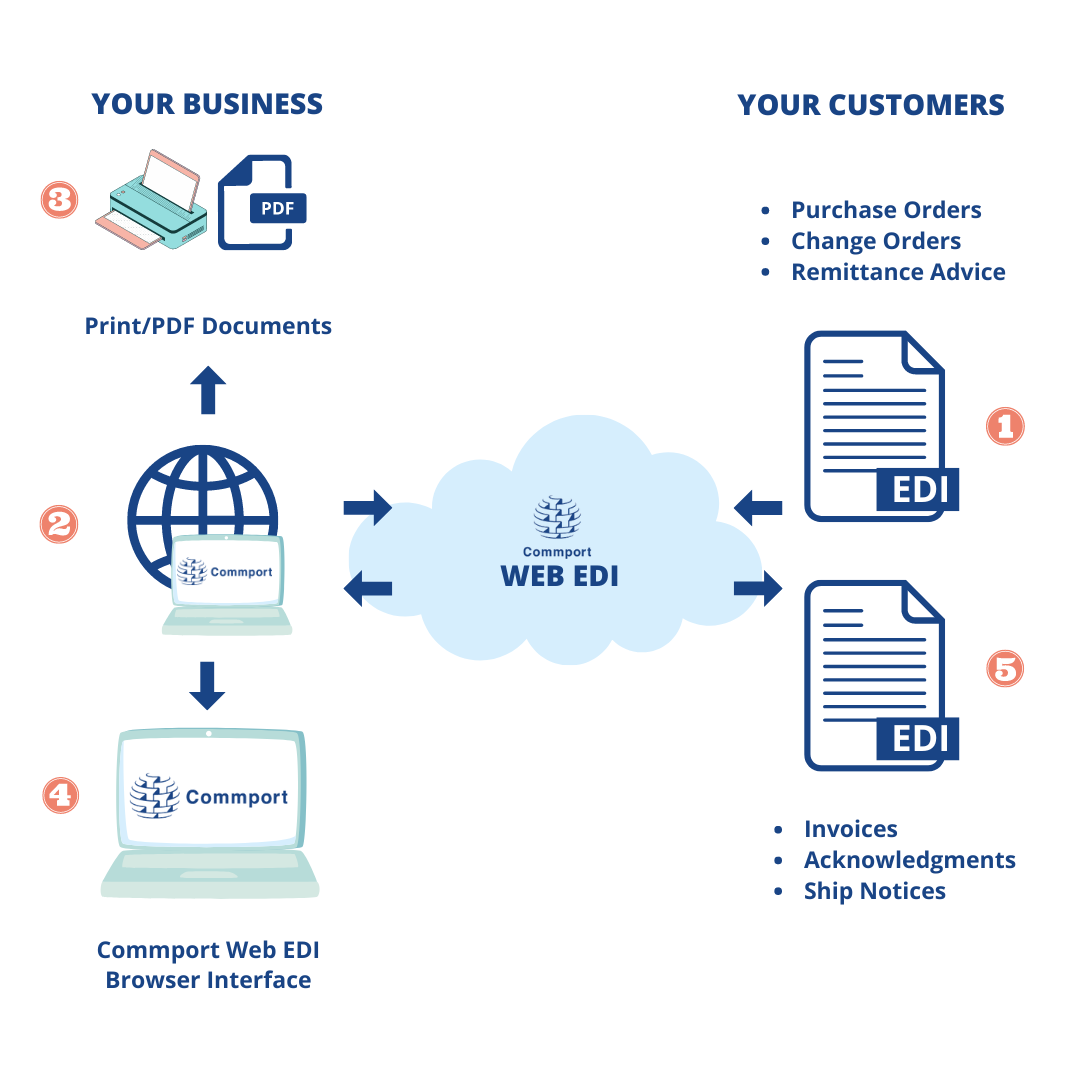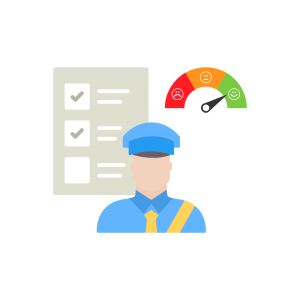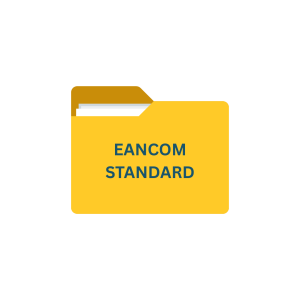Introduction
B2B data exchange has become more important than ever as more and more businesses are adopting digital transformation and moving away from old-school manual data entry and paper-based processes. One such technology that is helping in this transition is web EDI.
EDI allows companies to exchange business documents electronically in a standardized format. While there are many ways in which EDI data can be transmitted between trading partners the two most prominent ones are integrated EDI and web-based EDI solutions
While traditional integrated EDI solutions have been widely adopted across many businesses especially large-scale enterprise that needs large volumes of data exchange daily, web EDI on the other hand has emerged as a flexible, cloud-based alternative, offering the same benefits but with greater accessibility and scalability for small and medium businesses who handles less data.
Key Takeaways
- Web EDI is an online, cloud-based solution for managing electronic data interchange (EDI) without complex software installation.
- It enables efficient communication between trading partners, automating order processing and data exchange.
- Ideal for small to medium-sized businesses needing cost-effective, scalable EDI solutions.
- It simplifies compliance with retailer and supplier EDI requirements and reduces manual errors.
- It provides real-time access to transactions, ensuring greater accuracy and transparency in business operations.
What is Web EDI?
Web EDI is a cloud-based EDI system that allows businesses to send and receive documents such as purchase orders, invoices, and shipping notifications through an online interface. Unlike traditional integrated EDI, which requires software installations and dedicated systems, web-based EDI solutions operate on a cloud-based platform, enabling businesses to access and manage transactions from any device with internet connectivity.
Difference Between Integrated EDI & Web EDI
The primary difference between integrated EDI and web EDI lies in how they are implemented and maintained. Integrated EDI typically requires complex software installations that link directly to a company’s internal systems, such as their ERP or accounting software. This method automates processes but demands higher upfront investment and ongoing maintenance.
On the other hand, cloud EDI solutions are more affordable and easier to implement, as they are hosted on a cloud platform. Users can manage transactions via a simple web interface, eliminating the need for dedicated software or hardware. For small and medium-sized businesses, web-based EDI solutions offer a cost-effective way to streamline operations without the need for significant IT infrastructure.
Why is Web EDI Needed?
As businesses continue to expand their digital footprints, the need for fast, reliable, and secure data exchange becomes even more important. It simplifies these processes, allowing businesses of all sizes to connect with trading partners, suppliers, and customers globally without investing in costly systems.
For many companies, web-based EDI solutions are essential for managing day-to-day transactions, ensuring compliance with trading partner requirements, and avoiding costly errors caused by manual data entry. The scalability of cloud EDI solutions makes it ideal for businesses that are looking to grow without constantly upgrading their infrastructure.
When to Use a Web EDI Solution?
The answer lies in evaluating your current operations and the challenges you face.
- Suppose your business exchanges business documents, such as invoices, shipping orders, and inventory updates, manually, require just a small volume of data exchange needs and you’re struggling to maintain accuracy and compliance.
- When you don’t want to invest in costly IT infrastructure, maintenance, and other labor resources. With no requirement for hardware or software and no prior EDI knowledge needed, it could be easier to become EDI compliant with your customers using a web-based EDI solution.
- If you do not have many EDI business partners and provided that the volume of documents to be exchanged is limited, a web EDI solution can be useful for your company.
- Additionally, if your trading partners or industry regulations require you to be EDI compliant, switching to Web EDI ensures compliance while keeping costs manageable.
Where is Web-Based Cloud EDI Solution Used?
Cloud EDI solutions are used across various industries, including
- Retail,
- Manufacturing,
- Healthcare,
- Logistics and
- More
For retailers, it ensures efficient communication with suppliers and helps maintain inventory accuracy. In manufacturing, EDI is often used to automate the ordering and invoicing processes, while healthcare organizations use EDI to manage inventory and process purchase orders, invoices, and more.
The flexibility of EDI solutions allows them to be adapted to virtually any industry where the timely and accurate exchange of data is criticals
What Features a Web EDI Solution Should Have?
When selecting a web-based EDI solution, businesses should consider several key features:
Ease of Use
The platform should offer a user-friendly interface that requires minimal training.
Cloud Accessibility
Being cloud-based, it should allow access from anywhere, at any time.
Automatic Generation
The system must allow automatic document generation such as invoices from transactions received as purchase orders.
Alert Management
Easy to manage alerts and notifications.
Scalability
The solution should grow with your business, accommodating increasing transaction volumes.
Multiple Trading Partner Management
Transact with various trading partners from one interface
View and Download
View and download EDI transactions in a readable format in HTML or PDF.
Supports Multiple EDI Standards
Ensure the system complies with the latest industry standards (e.g., X12, EDIFACT).
Security
A robust solution must offer strong encryption and secure data-handling practices.
Support and Integration
Look for a solution with reliable customer support and the ability to integrate with existing systems if needed.
What Does Using a Web EDI System Involve From a Retailer and Supplier Perspective?
From a Retailer Perspective
From a Supplier Perspective
For retailers, EDI helps simplify their supply chain operations. It enables retailers to automatically exchange documents with suppliers, from purchase orders to inventory updates, in real time. By integrating EDI, retailers reduce manual errors, streamline order processing, and maintain accurate inventory records, leading to better customer satisfaction and operational efficiency.
Real-Time Scenario
- Low stock triggers automatic purchase order generation.
- The supplier receives and confirms the order instantly.
- A shipping notice with tracking info is sent.
- The invoice is automatically matched with the purchase order.
- Real-time shipment tracking ensures smooth inventory handling.
- Quick restocking allows products to be available faster.
Suppliers benefit from EDI solutions by automating invoice submissions, shipping notices, and inventory restocks. This level of automation reduces delays and minimizes the risk of errors, allowing suppliers to better manage orders, respond to customer needs faster, and reduce administrative burdens. Thousands of suppliers use web-based EDI solutions daily to exchange key business documents
Real-Time Scenario
- They receive a notification (Eg- Purchase order received)
- Log in to the web portal to view the purchase order
- It can be downloaded as a PDF and printed
- A purchase order response is generated
- Dispatch advice (ASN) is generated
- An invoice (EDI 810) is generated
- Once everything is generated all of these documents can be sent from the same interface in just one click
How a Web EDI System Works?
A Web EDI system operates by converting business documents into a standardized format that can be read and processed by other systems. Here’s how it typically works:
Document Creation: A business creates a document, such as a purchase order
Data Translation: The Web EDI platform converts the document into an EDI format (e.g., X12, EDIFACT).
Transmission: The document is securely transmitted to the recipient via a cloud-based network.
Reception and Processing: The recipient receives the document, which is automatically translated back into their internal format.

Step by Step Process
- Your customer sends an EDI Purchase Order (PO) the way they do with all their EDI suppliers.
- You receive an email alerting you that a PO has arrived. Then you log into Commport Cloud EDI using a web browser
- You process your new PO for viewing and printing in a readable format. Commport Cloud EDI then sends an EDI acknowledgment back to your customer confirming you received the PO.
- When goods are ready to ship and invoice, you select a PO, and an invoice screen appears already populated with billing information from the PO.
- Your invoices are converted to EDI and delivered to your customer. You can also send PO acknowledgments ship notices and print packing labels.
- This seamless process enables businesses to communicate in real time, reducing manual processing times and enhancing accuracy.
Benefits of Web EDI
It offers several benefits, including:
- Cost-Effectiveness: Lower upfront costs compared to integrated EDI.
- Faster Transactions: Transactions are processed faster, reducing delays.
- Improved Accuracy: Automation reduces errors in data entry and document processing.
- Scalability: As your business grows, the system can handle increased document volumes.
Benefits to Suppliers
Benefits to Retailers
- Improved Order Management: Faster order processing and reduced errors.
- Automated Invoicing: Simplified invoicing procedures, reducing administrative tasks.
- Real-Time Updates: Instant communication with trading partners, enhancing operational efficiency.
- Streamlined Supply Chain: Automated ordering and inventory updates reduce stockouts and overstock.
- Faster Order Fulfillment: Retailers can process orders faster and with more accuracy.
- Better Customer Satisfaction: Timely and accurate deliveries lead to improved customer experiences.
Conclusion
Thousands of suppliers use web-based EDI solutions daily to exchange key business documents in a standardized format to comply with EDI standards and trading partner requirements. It is a low-cost EDI solution that is not only easy to use but can also easily be accessible from anywhere in the world.
Web-based EDI solutions help improve efficiency, accuracy, and scalability. Whether you’re a retailer, supplier, or operating in another industry, adopting Web EDI can transform your operations by automating key processes, reducing errors, and facilitating seamless communication with your trading partners.
With web-based EDI you can start exchanging EDI in hours with any trading partner rather than waiting for weeks or months with integrations.
Free Download: EDI Buyers Guide
Unlock the full potential of your supply chain with our comprehensive EDI Buyer's Guide — your first step towards seamless, efficient, and error-free transactions
Commport Web EDI - Cloud Based EDI Solution
Frequently Asked Questions
Web EDI operates through a cloud-based platform and requires no complex installation, making it cost-effective and easier to implement. Integrated EDI, on the other hand, connects directly to a company’s internal systems and is often more expensive and complex to maintain.
Web EDI is ideal for small to medium-sized businesses looking for a cost-effective, scalable solution to exchange documents with trading partners, suppliers, and customers without investing in costly hardware or software systems.
Web EDI platforms use encryption and secure data transmission protocols to protect sensitive business information during exchanges, ensuring compliance with industry standards and security regulations.
With Web EDI’s cloud-based nature, businesses can typically start using the solution within a few days, as there’s no need for complex installation or hardware setup.
Web EDI supports the exchange of various business documents, such as purchase orders, invoices, shipping notices, advance shipment notifications (ASNs), and inventory updates, all in a standardized format.
Many Web EDI solutions offer integration options with ERP, accounting, and other business management systems, allowing for seamless data exchange and automated workflows.





